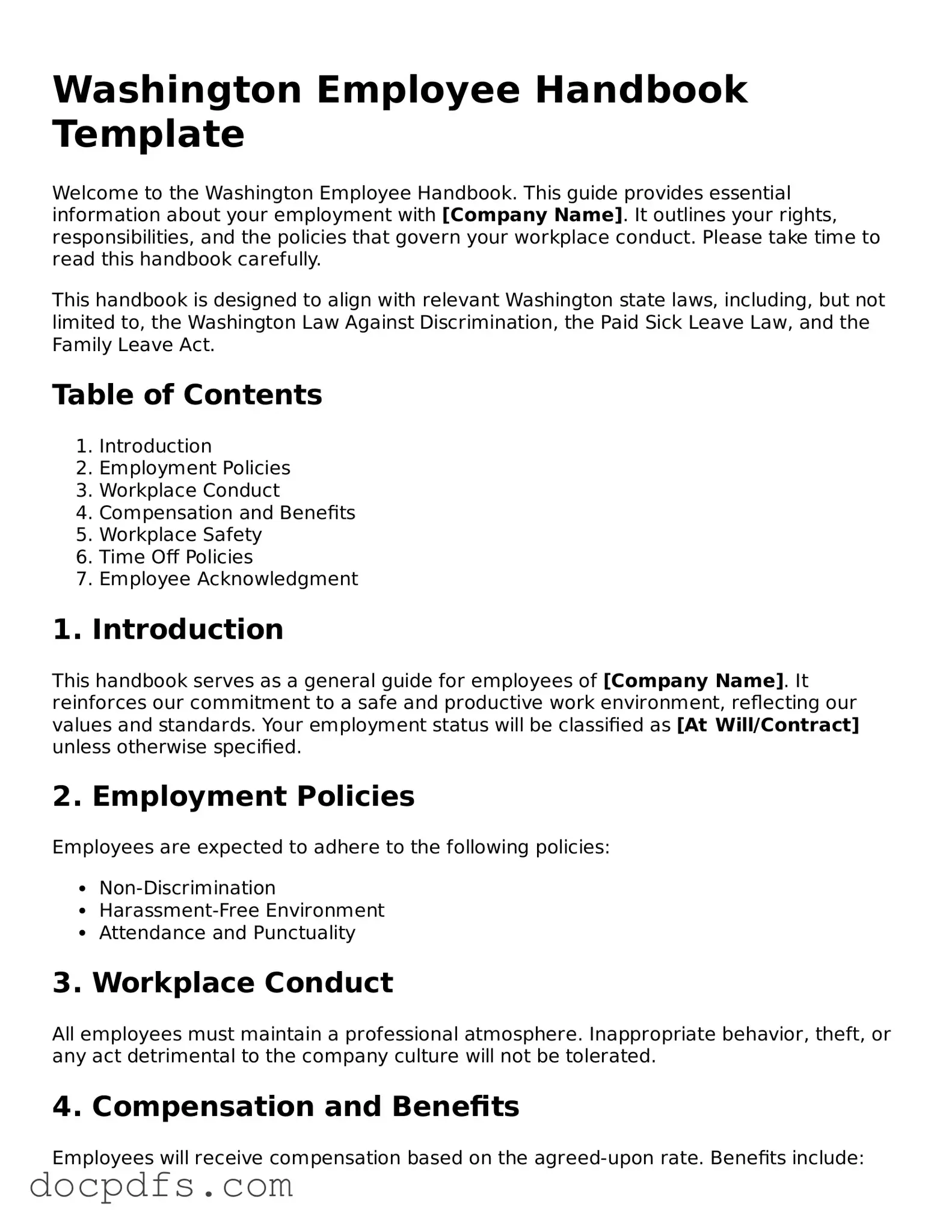In Washington State, an Employee Handbook serves as an essential document that outlines the policies, procedures, and expectations within a workplace. This form typically includes critical information such as employee rights, workplace conduct, attendance policies, and benefits. It also addresses topics like harassment, discrimination, and safety protocols, ensuring that employees understand their responsibilities and the resources available to them. Employers use this handbook to foster a positive work environment while complying with state and federal laws. By clearly communicating company policies, the Employee Handbook helps to minimize misunderstandings and provides a framework for addressing workplace issues. Additionally, it often includes acknowledgment sections where employees can confirm their understanding of the policies outlined, reinforcing the importance of adherence to the guidelines set forth. Overall, the Washington Employee Handbook is a vital tool for both employers and employees, promoting transparency and accountability in the workplace.
